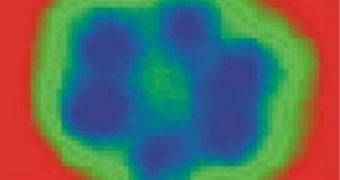A new research on the smallest known piece of ice, a water hexamer, using quantum mechanics brought a real breakthrough in understanding the true nature of ice and its formation. This is the smallest piece of ice that can form on hydrophobic metal surfaces.
Ice is the name given to any of the 14 known solid phases of water. The most common phase transition occurs when liquid water is cooled below 0 ?C (273.15 K, 32 ?F) at standard atmospheric pressure. Everyday ice and snow are hexagonal ice.
Dr Angelos Michaelides of the London Centre for Nanotechnology (formerly of the Fritz-Haber Institut der Max-Planck Gesellschaft in Berlin) and Professor Karina Morgenstern of the Leibniz University Hannover have analyzed a hexamer, the smallest ice piece and the results are extremely interesting.
By combining experimental observations and theoretical model, they revealed with unprecedented resolution the structures of the smallest pieces of ice that form on hydrophobic metal surfaces.
The finds are considered a breakthrough in understanding ice nucleation at a molecular level and take science a significant step closer to understanding the mysterious process through which ice forms around microscopic dust particles in the upper atmosphere.
Usually, water molecules in ice bond with each other with equal strength, but when analyzing the ice nanoclusters, the scientists were able to identify a pattern of shorter and longer bonds, in an alternative disposition between the water molecules.
The discovery of this pattern is considered crucial in the understanding of the ability of water molecules to share their hydrogen bonds and reveals a previously unknown competition between the ability of water molecules to bind to a metal surface and simultaneously accept hydrogen bonds.
Dr Michaelides said, "We are all familiar with the freezing of water. It features prominently in our daily lives, from fridge freezers to winter snow. Despite all this, the question of how individual water molecules come together and give birth to ice crystals remains mysterious. Our research provides an insight into the most important and ubiquitous type of ice nucleation event, namely heterogeneous nucleation. State-of-the-art experimental and theoretical techniques allowed us to 'watch' and accurately model what happens at very low temperatures."
Many applications of the new insight can be found, like explaining how water structures form on different substrates, such as transition metals and salt surfaces, or figuring out how water interacts with different aerosols and dust particles in the atmosphere, processes which drive cloud formation and have a large impact on the planet's climate.

 14 DAY TRIAL //
14 DAY TRIAL //